In Motion is a new series of online films created by The Work Room and commissioned by digital arts platform The Space, aimed at showcasing independent dance artists making work for screen in Scotland. It combines film and dance to make powerful creative expressions about the world we live in.
The series includes four screen dance works along with new films interviewing the creative teams about the process behind making their films. As the final film in the series is released, we spoke to award-winning director, artist and author Katrina McPherson, who produced the series.
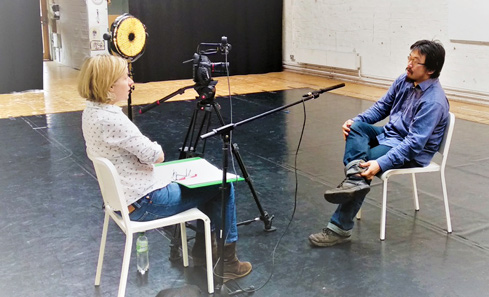
I studied dance at Laban in London and, on graduation in the late 1980s, was looking for a way to share dance with a larger audience. I was inspired by some of the experiments that were taking place at the time in the area of “dance for television”, particularly in the UK, through initiatives at the BBC and Channel 4. A post-graduate course in Electronic Image at Duncan of Jordanstone College of Art then kick-started for me what has been a 30 year engagement with the creative possibilities of dance and the moving image, with a parallel career directing arts programmes for TV. I have made work in collaboration with many different artists, as well as teaching what is now commonly known as screen dance. I even wrote a text-book “Making Video Dance”, the research and writing of which was funded by Creative Scotland and published by Routledge in 2006 (with a new edition due out this summer).
Just before Christmas 2017, Anita Clark (Director at The Work Room) and I saw a call out from The Space, looking to commission new digital work. The Work Room had recently hosted Unveiling Choreographies, which showed 16 works from Scottish artists exploring the relationship between movement, dance and film. We immediately joined the dots and thought it would be interesting to curate down that selection, to focus on just a few of them, and to find a way of presenting these to a wider audience.
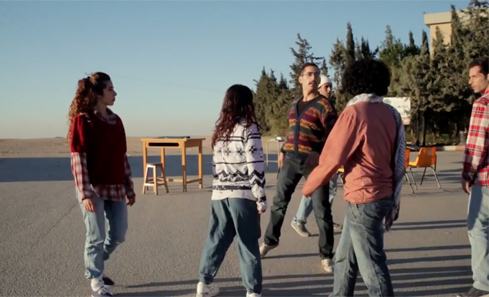
Once the project had been green-lit by The Space, they offered us a lot of support as they have a real focus on educating organisations about working with new media as a forum for art, so it was very helpful.
Part of my role as the Series Producer was to look at the bigger Unveiling Choreographies programme of 16 pieces, and to consider which films might stand alone whilst also having the potential to connect to other pieces to form a sort of series. In this process, I was looking for work that communicated not just the creative and artistic possibilities of dance and film, but which also explored wider ideas, themes and issues – to hopefully reach out to a wider audience.
The final four that were selected were the most obvious ones from that perspective, with plenty to talk about each one.
Some important and significant pieces of history are reflected in the work, and gesture and movement is used as a way of dealing with those themes.- Katrina McPherson, Producer, In Motion
We approached the artists and thankfully they were all up for it – we then just needed to make sure no technicalities would trip us up, like getting clearance for music rights. The so-called ‘companion pieces’ to the artists’ films are primarily interview-based. In a couple, we talk to one artist, whilst others we talk to multiple voices. The series was launched with an ‘explainer’ piece which effectively drew out some of the themes and voices that would feature in the four part series to follow.
We formed a team, with Monika Smekot (who was involved in Unveiling Choreographies) on board as production assistant, plus a great opportunity to work with Lewis Landini and Owa Barua, two dance filmmakers as camera operators / editors , all three bringing a keen interest in and experience of dance for the screen.
Because of the quick turnaround required to produce the films, we had all four edits going on at the same time which was very interesting! As things unfolded we learned a lot about how it would all work, and Katee Woods (social media producer) was brilliant at preparing the work for online sharing, working closely with The Work Room on marketing and the launch.
Quite incredible – two weeks after being launched, one of the films has already reached 66k views on Facebook, with the other three not far behind on 30-40k views each and growing. Operating in the world of screen dance, you don’t generally expect high viewing numbers, particularly with the demise of dance being made and broadcast for TV. Screen dance tends to be more normally at festivals where you’ll never get the same numbers - an audience of 100 would be good. So to witness the success of this series, and the amount of people that the work has now reached, is really exciting.
For In Motion, I think the biggest learning has been about making work for social media – thinking about things like the fact that people often watch without sound, or maybe only stick around for the first few seconds unless you can really engage them. Also, even though I’ve been living and working in Scotland for a long time, the opportunity to meet others working in this area and hear about their work and their ideas and how they’re developing – and having this dedicated time to talk to these other artists - has been really good.
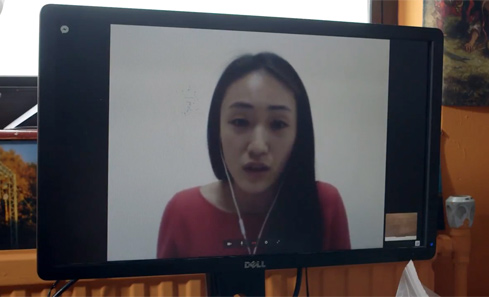
I also feel that, starting with the Unveiling Choreographies events and now with In Motion, there has been a really great opportunity to create a sense of identity around this kind of work being made in Scotland – perhaps beginning to build a community of artists working in this area, rather than people feeling like they’re working in isolated pockets.
Dance artists Aniela Piasecka and Isabel Palmstierna - who appear in “Faux Pas”, a gutsy music video about women reclaiming the streets at night - talk in their film about wanting their on-screen performances to be “more powerful than the camera’s gaze”. With all the artists there’s a real understanding of the potential and impact of the lens, the framing, of making work for the screen. They very consciously engaged with the fact that they were creating a film – not just “a filmed version of a live performance”.
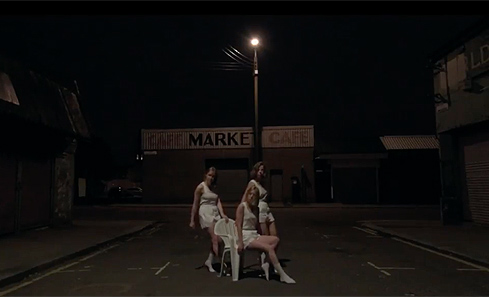
The series tackles some very real issues and that has the potential to reach out and be of interest to different types of people (Never Walk Alone, for example, is a humorous take on Brexit). Some important and significant pieces of history are reflected in the work, and gesture and movement is used as a way of dealing with those themes. There’s a social political connection – tackling themes including living away from home, being in transit, the criminalisation of education in Palestine, Brexit, sexual politics and so on.
And the advantage of the companion pieces are that they give a little extra context or background, with the aim of making watching the work more rewarding.
The major change I’ve seen is how the technology is more accessible than ever - you can film things on your phone, edit on your laptop – it’s much more possible to make this kind of work even that 10 years ago, and certainly than 30 years ago when I started making video dance. But it’s not just about that – getting the right equipment and support to make an effective production is still not that easy, nor is understanding the language of screen-based work. That language doesn’t have to be a narrative one, and it’s very different from dialogue-based film. You need an understanding of movement, framing, editing, music and soundtracks.
One of the unique things about screen dance is that it has the potential to take work out of studios and into location – that helps to draw the audience in, as not only can you watch it from home, but what you’re watching is located in a more recognisable world. It’s far less abstract than a black box in a theatre.
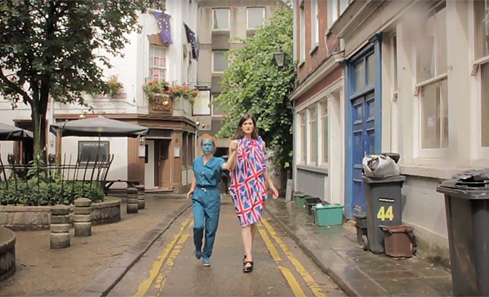
The field of screen dance is really coming of age, and internationally too. When I wrote “Making Video Dance” in 2006 there were perhaps two other theoretical books on the subject – now there's around 15. And whilst there used to be one or two courses offering modules in screen dance, now almost any degree in dance will have that include as module, if not a whole strand of under and post-graduate study.
There’s been a huge explosion in terms of people wanting to learn, read and talk about this kind of work. In terms of what’s being made, 25 years ago there were one or two festivals a year specialising in screen dance – now there are over 100 specialist festivals worldwide, each attracting hundreds of submissions.
Going back to In Motion, having experienced the potential of reaching large audiences through carefully designed and managed use of social media, I feel that the future of screen dance continues to be very exciting. What this space!
Photos of Katrina interviewing the contributors are courtesy of Katee Woods. All other images are stills from the films.
The Work Room is part of our 2018-21 Regular Funding Network consisting of 121 organisations across Scotland, supported by £101.6m Grant in Aid funding and a three-year budget commitment from the Scottish Government.